


In this final panel we give examples of pairs of Sc galaxies that have either similar appearances but greatly different absolute magnitudes or dissimilar appearances where the more chaotic of the pair has the brighter absolute magnitude. Both types of comparisons show again that luminosity class is not primarily a measure of absolute magnitude.
The first comparison is NGC
2276
(MBT0, i =
-22m.09; ScII-III) at the
upper left with NGC
3294 (MBT0,
i = -19m.79; ScI.3) at the upper right.
The arm pattern of NGC
3294 is more regular than that in NGC
2276, yet
the two galaxies differ by
 MBT0, i = 2.3
mag, with NGC
2276 being the brighter.
MBT0, i = 2.3
mag, with NGC
2276 being the brighter.
The middle comparison is NGC 3646 (MBT0, i = -23m.13; SbcII) with NGC 6699 (MBT0, i = -21m.92; SbcI.2). NGC 6699 is by far the more regular. The arms are well formed and are hardly fragmented, yet this galaxy is 1.2 mag fainter than the more chaotic NGC 3646 on the left. Although the broken arm pattern of NGC 3646 could possibly be due to tidal interaction with the small faint SBa galaxy NGC 3649 8 arc min away, this seems unlikely, as the projected distance is already 200 kpc and the companion is at least 3 mag fainter. (The redshift of NGC 3649 is unknown.)
The bottom comparison is NGC 1087 (MBT0, i = -21m.43; ScIII.3) with IC 749 (MBT0, i = -18m.65; SBcII-III). The latter is more regular by far than NGC 1087, yet it is 2.8 mag fainter. Furthermore, the very obvious later luminosity class of NGC 1087 makes its very bright luminosity of -21m.43 even more surprising.
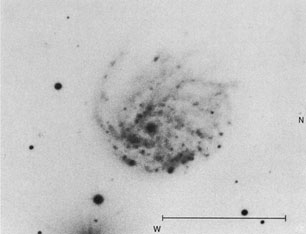
NGC 2276 P200-7566-S Sc(r)II-III -22m.09 2412 km/s | 
NGC 3294 W100-2330-H Sc(s)I.3 -19m.79 1571 km/s |
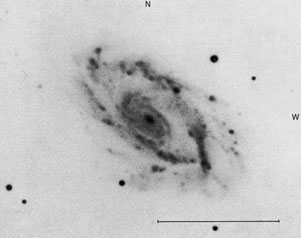
NGC 3646 W100-2219-H Sbc(r)II -23m.13 4195 km/s | 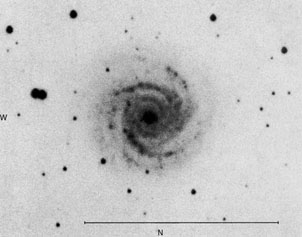
NGC 6699 C100-55-D Sbc(s)I.2 -21m.91 3512 km/s |
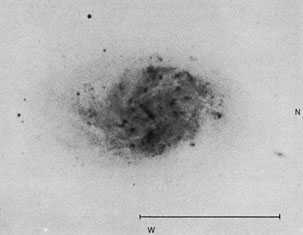
NGC 1087 W100-279-B Sc(s)III.3 -21m.43 1530 km/s | 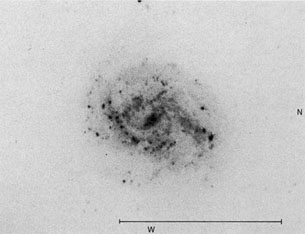
IC 749 P200-8041-S SBc(rs)II-III -18m.65 827 km/s |